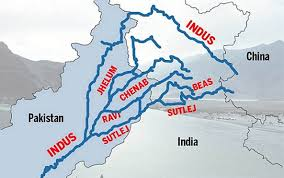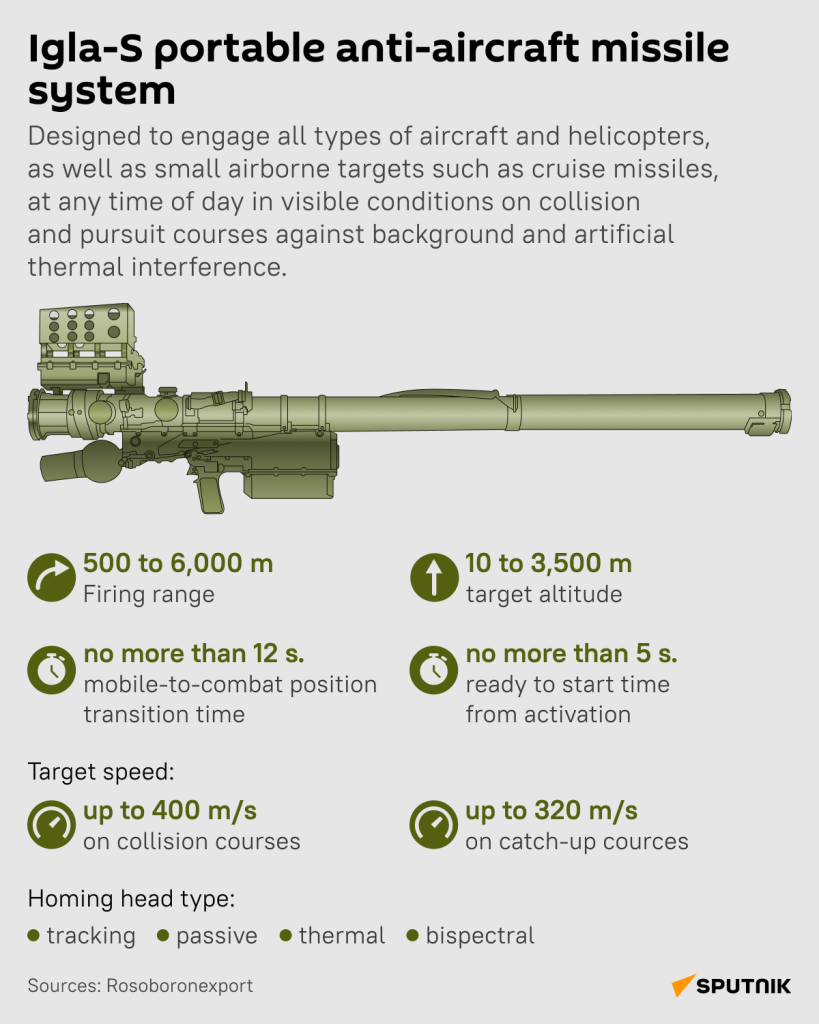Geography
Post Indus treaty hold, India resorts to untimely release of water from J&K dams on Chenab river - The Hindu
India, over the weekend, resorted to a surprise release of waters from the Baglihar and Salal dams in Jammu and Kashmir on the Chenab river. While this is far from triggering a man-made flood in Pakistan, it is the first consequential water-based action taken by India since it announced keeping the Indus Waters Treaty “in abeyance”, following the Pahalgam terror attack.
Chenab River
- Overview: Major river shared by India and Pakistan which is a tributary of the Indus River.
- Origin: Formed by the confluence of Chandra and Bhaga rivers at Tandi, Himachal Pradesh.
- Other name: Known as Chandrabhaga in upper stretches.

- Course:
- Flows westward through Jammu & Kashmir, between Siwalik and Lesser Himalayas.
- Turns southwest into Pakistan, entering Punjab's alluvial plains.
- Joins Jhelum River near Trimmu, then merges into Sutlej River.
- Length: Approx. 974 km long.
- Utility: Supports irrigation canals in both countries.
- Tributaries: Miyar Nalla, Sohal, Thirot, Bhut Nalla, Marusudar, and Lidrari.
Polity
India’s Forest Rights Act stands apart from exclusionary laws globally - The Hindu
Conservation science and its legal frameworks are rooted in colonial ideas, and define nature as “pristine” and untouched by humans. When wielding this approach — often called the fortress model — exclusive spaces called “protected areas” are created, where conservation is implemented with centralised state control, criminalising indigenous peoples and local communities (IPLCs) as encroachers.
Global and Indian Legal Framework
- Convention on Biological Diversity (CBD):
- Adoption: Adopted in 1992 (Rio Summit), with 196 member countries.
- Objectives: Conservation, sustainable use, equitable sharing of biodiversity benefits.
- Role: Influences national legal frameworks worldwide.
- India’s position: India as a CBD Signatory: Among 17 megadiverse nations; enacted Biological Diversity Act (BDA), 2002.
- BDA Structure:
- Centre: National Biodiversity Authority (NBA).
- Local levels: State Biodiversity Boards (SBBs) and Biodiversity Management Committees (BMCs).
- Focus: Traditional knowledge, local biodiversity, and conservation.
IPLCs and Conservation
- CBD’s Article 8(j): Urges respect for traditional knowledge and practices of Indigenous Peoples and Local Communities (IPLCs).
- UN Declaration on Rights of Indigenous Peoples (2007): Upholds IPLC rights.
- India’s position: India supports the declaration but avoids the term “indigenous”; instead recognizes STs via Articles 244, 244A.
Legal Instruments Supporting IPLCs
- PESA Act (1996) and FRA (2006): Enhance participatory governance in tribal areas.
- FRA’s role: Provides rights to access biodiversity, protect traditional knowledge, and manage community forest resources.
Kunming-Montreal Global Biodiversity Framework (KMGBF), 2022
- Adoption: Adopted at CBD COP-15, aims for “living in harmony with nature” by 2050.
- 23 global targets: Includes “30 by 30”: protecting 30% land and marine areas by 2030.
- Emphasis: IPLC participation, traditional knowledge, and cultural rights.
India’s Biodiversity Strategy (2025)
- India’s updated NBSAP (2025): Includes 23 targets aligned with KMGBF.
- Implementation: Through BMCs and State Forest Departments.
- Issues: Critics argue overemphasis on top-down approaches undermines FRA-led decentralised governance.
Legal Reforms & Recommendations
- Integrating biodiversity rules with FRA and gram sabha-based governance.
- Prior informed consent before declaring biodiversity heritage sites.
- FRA can potentially protect 4 crore ha of forest land — but requires legal alignment across sectors.
The implications of caste enumeration - The Hindu
Since the emergence of the modern state in India, populations have been enumerated. The first colonial Census conducted in 1872 generated statistical data, allowing the British to control India and regulate every aspect of Indian life. While the Census was seen as an administrative enumeration, a statistical activity more than a political act of a reorganisation of groups, the introduction of the caste Census by H.H. Risley made the Census into a political instrument in a way it had never been used before.
Caste Count Pre-Independence to Present
- Late 19th century: Caste data used by British for administration, taxation, and political representation, benefitting upper-caste elites.
- Exclusion of OBCs: Despite constitutional safeguards post-independence, OBCs were largely excluded by the Constituent Assembly.
Early OBC Identification
- Kaka Kalelkar Commission (1953): Identified ~2,300 OBC communities; not implemented due to vague criteria and political opposition.
- Ram Manohar Lohia: Advocated for reservation based on social equity, not merit alone.
- Mungeri Lal Commission (Bihar): Proposed reservations for backward classes.
Mandal Commission
- Mandal Report (1980): Recommended 27% OBC reservation based on 1931 caste Census.
- Implementation: Implemented in 1990 by V.P. Singh government amid political turmoil.
- Impact: Reshaped Indian politics, solidifying OBC representation.
Significance of New Caste Census
- Aim: To address representation gaps among backward and subaltern groups.
- Impact: Will expose privileged castes, land ownership, and economic inequality.
- Utility: Crucial for denotified, nomadic, and underrepresented SC/OBC communities.
- Role: A means to correct past exclusion and deepen policy impact.
Some deported to Pak say they are Indian voters: who gets a Voter ID and how? - Indian Express
Following a government order in the wake of the Pahalgam terror attack, hundreds of Pakistani nationals have left India this week. However, many of the deportees have claimed that they have valid Aadhaar cards, ration cards and even Voter IDs.
Provisions Regarding Voter IDs
- Article 326: Grants voting rights to all Indian citizens aged 18+ in Lok Sabha and State/UT Assembly elections.
- Section 16, RP Act 1950: Disqualifies individuals from electoral rolls if:
- Not an Indian citizen,
- Declared of unsound mind by a competent court,
- Disqualified due to electoral offences or corrupt practices.
- Form 6 (ECI): Used to register new voters.
- Requires self-attested copies of age and address proof.
- Declaration of citizenship is mandatory but no direct citizenship proof needed.
- Section 31, RP Act: False declaration may result in up to one year imprisonment, a fine, or both.
- Electoral Registration Officer (ERO): Reviews applications, handles claims and objections, conducts hearings.
- Booth Level Officers (BLOs): Assist EROs by collecting and verifying claims and objections.
Role of Electoral Registration Officer (ERO)
- ERO must ensure only Indian citizens are added to the electoral roll.
- Citizenship is verified only when there is an objection or doubt about the applicant.
- ERO must independently assess evidence without external influence.
- In the absence of objections, citizenship is often presumed.
Burden of Proof
- First-time applicants: The onus of proving citizenship lies with the applicant.
- In case of objection: The objector must provide initial proof; the ERO may still seek evidence from the applicant.
Special Cases
- Migrants within India: ERO must cross-verify with the District Election Officer (DEO) of the originating district.
- Married women without documents:
- ERO may accept past voter ID as unmarried person,
- Or use proof of marriage/certificates from local headmen.
- Non-Citizens on Electoral Rolls: Upon verification, such names are deleted, and action is taken.
'Triple test' to determine OBC quota in Jharkhand - Indian Express
Jharkhand has finished collecting data on the population of Other Backward Classes (OBCs) from all districts of the state, in order to determine quotas for OBCs in urban local bodies. The data collection is a part of the first step of the “triple test”, a three-step guideline laid down by the Supreme Court to ensure OBC quotas in local bodies are determined in a fair and constitutional manner.
“Triple Test”
- Vikas Kishanrao Gawali vs State of Maharashtra (2021): Triple test includes:
- Empirical Inquiry: A dedicated commission must conduct a detailed, data-driven study on the backwardness of OBCs in local bodies.
- Reservation Justification: Proportion of reservation must be based on the findings of the commission to avoid arbitrariness.
- 50% Ceiling Compliance: Combined reservation for SCs, STs, and OBCs should not exceed 50% of total seats.
Developments in Jharkhand
- OBC Commission Setup: Formed in June 2023; studied MP model for triple test.
- Data Collection: Started in Dec 2023, delayed submission by several districts; now complete.
- Verification: Data to be analysed by institutes like IIM, XLRI, and XISS.
- Current Status: Final report pending due to absence of commission chairperson.
Survey Scope
- Focus: Door-to-door urban survey (not a full caste census).
- Data Collected:
- Population share of OBCs in urban areas.
- Political representation across levels (MPs, MLAs, mayors, panchayat leaders).
- Winners from general seats in last 2 ULB elections.
OBC Classification in Jharkhand
- Two Categories:
- BC-I (More Backward): 127 castes.
- BC-II (Relatively Better Off): 45 castes.
- Reservation Distribution: BC-I gets larger share.
- Demographics: OBCs constitute ~50% of Jharkhand’s population.
- Largest Group: Kudmi (Mahato/Mahto) – ~15% of electorate.
Sci and Tech
Microgravity increases core body temperature: IIST model - The Hindu
Researchers at the Indian Institute of Space Science and Technology (IIST), Thiruvananthapuram, have published a study reporting that “microgravity consistently increases core body temperature, with fluid shifts playing a crucial role in thermal balance”.
Thermoregulation Model
- Development: By Indian Institute of Space Science and Technology (IIST)
- Model Features: 3D computational model simulates heat transfer in the human body under microgravity
- Factors included:
- Sweating and shivering
- Clothing insulation
- Heat production by organs
- Blood flow redistribution
- Hands and feet: Become cooler in space over time
- Head, abdomen, and core: Experience increased warmth
- During exercise in space:
- Body temperature rises faster than on Earth
- Core temperature may increase from 36.3°C to 37.8°C in 2.5 months
- Can rise to ~40°C during intense activity (dangerous threshold)
- Validation: Model validated using astronaut data from Mir Space Station and ISS
- Use: Calculates Universal Thermal Climate Index (UTCI) considering external factors like wind, humidity, and solar radiation.
Microgravity
- Definition: A condition of apparent weightlessness experienced in space during free-fall orbit around Earth.
- Gravity in Orbit: Gravity is not zero in space; at ~250 miles altitude, it remains ~89% as strong as on Earth. Objects float due to continuous free-fall, not absence of gravity.
- Weightlessness: Occurs because spacecraft and everything inside fall together at the same rate.
- Physiological Effects:
- Bones and muscles (weakening)
- Blood circulation
- Metabolism
- Thermoregulation (core temperature control)
- Importance of Thermoregulation:
- Essential during long-duration space missions
- Microgravity alters normal thermal responses of the body.
Defence
India Receives Igla-S Air Defences From Russia; New Missiles For 'Forward Deployment' Amid Pak Tensions - The Hindu 
India has received a fresh shipment of Russian Igla-S air defence missiles amid rising tensions with Pakistan following the Pahalgam terror attack.
Igla-S
- Type: Man Portable Air Defence System (MANPADS)
- Origin: Russia
- Operation: Hand-held; used by individuals or small crew
- Purpose: Designed to target low-flying aircraft, drones, and cruise missiles
- Components:
- 9M342 missile
- 9P522 launcher
- 9V866-2 mobile test station
- 9F719-2 test set
- Weight:
- Missile: 10.8 kg
- Entire system: 18 kg
- Technology: Infrared homing (locks onto heat signatures)
- Range: Up to 6 km
- Altitude Coverage: Up to 3.5 km
- Speed: 400 m/s
- Deployment Time: 13 seconds
- Mobility: Highly portable; suited for mobile units in high-risk zones